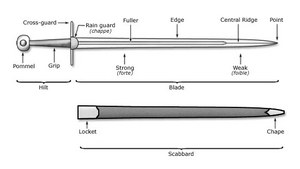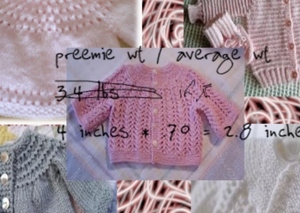So you want to buy a sword. At face value, this seems like no easy task; various cool-looking blades can be picked up practically anywhere, from Ebay to larger gas station convenience stores. But buying a sword can be a difficult task if you’re looking for something more than a decorative wall-hanging or something cheap to practice with. With the glut of pretty, but ultimately useless blades on the market, it can be very difficult to sort out the real swords from the pieces of metal that just look like swords. This is true whether you’re looking for a Japanese katana, a Roman gladius, a Chinese dao, a Scottish claymore, or any other type of blade.
What’s the Big Deal?
Why is it so important to find the “real” swords hiding among the fakes? Most decorative swords are only made to withstand the rigors of hanging on your wall and occasionally being posed with. Using them as though they were real swords (i.e., using them to cut things) can often have bad results: the blade can be damaged or even break completely, sometimes so catastrophically that the blade will actually separate from the grip and fly through the air just from the force of the swing, before you even hit anything. Even using fake swords for “training” before moving up to real blades can be a bad idea, as the decorative pieces are almost never realistically weighted or balanced and will give you a completely incorrect impression of how a real sword would be handled – a potentially dangerous problem when you finally do get a real, live blade. (If you really need something inexpensive to train with, there are well-made and correctly-balanced wooden swords on the market in most styles.)
Getting Started
The first thing to do when looking to buy a real sword is to accept that it’s probably going to put a fairly significant dent in your wallet. Real swords, even basic ones, are time and labor intensive to make, so generally speaking you should be prepared to spend in the $100-300 range for an “entry-level” blade. Except for closeouts and dent-and-scratch sales items (both of which can be valuable money-savers), a sword priced lower than that will almost always be purely decorative. With that qualifier firmly in mind, determine exactly what kind of sword you’re looking for. Generally, manufacturers will specialize in swords from particular cultures, regions, and/or time periods, so knowing what you’re looking for can save you a lot of time. Do some web searches to try to determine who the primary manufacturers of your desired swords are. Sword-focused communities and forums can be a big help in making this determination. They can also provide some reviews of specific companies and even specific sword models. This list of manufacturers should be your starting point. Most likely, each manufacturer will have their own website or at least an official primary retailing site, so you should be able to determine what price range you’re looking at for each one relatively quickly. Bear in mind, though, that it is often possible to buy swords from outside retailers for less than the manufacturer’s suggested price (though not excessively less; the old adage stands, “if it seems too good to be true…”). To find these, look for sites that are listed as official distributors for the manufacturer(s) you’re looking at. One sad but true aspect of looking at swords is that there are a lot of cheap, unusable no-name copies of respected manufacturers’ blades out there, so if the retailer doesn’t list the sword specifically as being made by a particular manufacturer, it probably wasn’t, even if it looks identical (or in some cases even uses the manufacturer’s product photo). There are also unscrupulous retailers who will deceptively list knock-offs as the genuine article, so checking around on sword communities about retailers can be just as important as checking in them about manufacturers.
Carbon Steel
Doing this background research can often net you a decent sword all on its own, but what about those times when there isn’t much information available on a manufacturer, retailer, or specific blade? In those cases, you’ll need to be able to spot some of the important defining characteristics of a real sword versus a decorative blade. Probably the first, most important, and often most telling thing to look for is information about the steel used. Many people don’t realize that there are literally thousands of different types of steel out there, and relatively few of them are useful for sword blades. Most steels you’ll encounter are commonly denoted by a number; for example, 1095 or 1060. Specific information is available online about each individual type of steel, but numbers consisting of 10XX denote simple carbon steels, which is what you’ll probably be looking for. Some retailers simply describe swords as being “carbon steel” or “combat steel,” which can be misleading, but any reputable manufacturer will be able to give specific information on the steel used in the blade. Stainless steel (of which the most commonly-seen types are 440 and 480) is pretty and doesn’t rust, but is useless for a sword, as it is far too brittle (it can be a good material for knives, though). Note that this does mean that any real sword blade, being made of carbon steel, will be prone to rust, and will need to be oiled and cared for. Higher-end swords are often made of folded and/or laminated steels, referred to as “damascus steel,” “sanmai,” and so forth. While these are legitimate, and beneficial, swordmaking techniques, they will rarely, if ever, be found in the entry-level price range, and inexpensive swords marketed as such (low-end “damascus” blades are particularly common) can be assumed to be imitations rather than the real thing. If a sword does not have any information on the steel used, walk away.
Full Tang
A second, wholly vital and often overlooked facet of a real sword is the tang. This is the part of the blade steel that extends through the grip, to which the hilt (handguard, grip, and pommel) is attached. Any real sword must have a “full tang;” that is, the steel must extend all the way to the pommel (the “butt end” of the grip). Any sword without a full tang is unsafe, as the blade and the grip will not be securely enough attached to one another to withstand the force of real swings and cuts. Here again, we see the unscrupulous manufacturers causing trouble by making so-called “full tang” swords whose tangs are merely small steel strips or rods welded onto the end of the blade. These are called “rat-tail” tangs, and are little better than having a sword without a full tang, as the weld point is, again, not strong enough to withstand serious use. A real full tang, by contrast, is a large, sturdy strip of metal that was clearly a part of the blade when it was forged. It can, in some cases, be difficult to tell if a sword has a real or rat-tail tang when buying online, as most retailers do not show photos of disassembled swords. In this case, emailing the manufacturer or retailer and asking for a photo of the tang may be your best option. If, in doing your initial research, you found others who purchased the sword you’re looking at, you may alternately want to contact them. If you’re purchasing the sword in person, you might ask the retailer if they would disassemble the hilt for you (trying to do it yourself will probably land you in trouble). It should be noted that, in some cases, the hilts cannot be taken apart, as in the process of manufacturing the end of the tang is hammered around the pommel to hold it in place. By and large, though, reliable manufacturers with good standing track records in the functional blade market will make swords with real full tangs.
Heat Treatment
The third vital aspect to look for in a real sword is heat treatment, or “tempering.” Tempering is the process of hardening the steel of the blade by heating it to red-hot, then rapidly cooling it (“quenching”) in water or oil. Regardless of the type of steel used, tempering is necessary to produce a blade that will stand up to actual cutting. Though some swords, most commonly on the low end, will be entirely tempered (and are perfectly usable), the ideal is “differential tempering,” or tempering only the actual cutting edge of the blade while leaving the rest of the steel softer. This allows the softer steel to better absorb the impact of cutting, while the harder edge does a better job of cutting and keeping an edge. Differential tempering will leave a distinct “temper line” on the blade, where the tempered and untempered steel are visibly different. Note, however, that it is possible (and common, particularly with low-end katana as they are always expected to have a temper line) for swords to have a fake temper line created by a wire brush or similar means, so even if the blade has a temper line be sure to establish that it has actually been heat treated. All real sword blades must be heat treated or they simply will not survive use.
Cutting Edge
A fourth, less vital but still important, aspect of a real sword is the blade edge itself. This is important to mention in part because it can be deceptive, as well as dangerous. Generally speaking, the sharper and thinner a cutting edge is, the better it will cut, but the more prone it will be to breaking. Thus, swords, especially those historically used against armored opponents, tend not to have actual “razor edges” on them. Indeed, “thumbing” the blade (gently pulling the thumb across the edge of the blade to feel its sharpness) will often deceptively indicate that the blade is not as sharp as most assume it should be, which does not really indicate how well it cuts. Many quality swords that feel dull when thumbed will, if the thumb is run even lightly down the edge, cut that thumb quickly and easily to the bone. The sharpness of the edge can’t really be tested when buying online (refer to your initial research for information on specific blades), but if you’re buying in person the best non-damaging way to test it is with a sheet of thick paper. To test the blade in this way, hold the sword in one hand and the paper in the other, place the edge of the sword (near the tip) lightly against the edge of the paper so that they are perpendicular to each other, and push the sword forward in one fluid motion, running the edge of the sword over the edge of the paper. The deeper and more cleanly the sword cuts the paper in that one motion, the better the sword’s edge.
Craftsmanship
Finally, look at the overall craftsmanship of the sword. Is everything assembled well? Does the blade have any imperfections, waviness, or warping? If you can hold the blade before purchasing it, see if you can wiggle the blade in the hilt, or if any part of the whole seems loose. Look for any gaps, overlapping, or other indicators the pieces aren’t fitting together quite right. It pays to be a perfectionist here; any slight wobbles or poorly-fit parts may become a serious annoyance or even a major problem down the road, and issues with the blade itself will prevent the sword from cutting the way it should. And, of course, even though you are looking for a functional sword and not a wall-hanging, you’ll still want it to look good when you show it off to your friends and family. Be sure to check the scabbard as well; though a damaged or broken scabbard is less of a problem than a damaged or broken sword, poor craftsmanship on the scabbard may be an indication that the maker does not hold to as high a standard of quality for the parts of the product that aren’t as commonly noticed, and this can include the inner construction of the sword’s hilt.
On the whole, just keep your eyes and ears open, critically evaluate the claims made by manufacturers and retailers, and watch out for scammers; the same sort of advice one would follow for buying any costly product. Swords may have a tremendous mystique and an air of ancient secrets about them in our culture, but the fundamentals really aren’t that difficult to understand. Good luck, and don’t forget to pose for a few awesome photos once you’ve got your shiny new sword.





